West Hartford Firefighters Perform ‘Low Angle Rescue’ as Training Exercise

Audio By Carbonatix

As part of a training exercise, West Hartford firefighters perform a low-angle rescue of an "injured party" along Trout Brook. Photo credit: Ronni Newton
Activity involving numerous members of the West Hartford Fire Department on Trout Brook Drive Thursday was associated with rescue training.
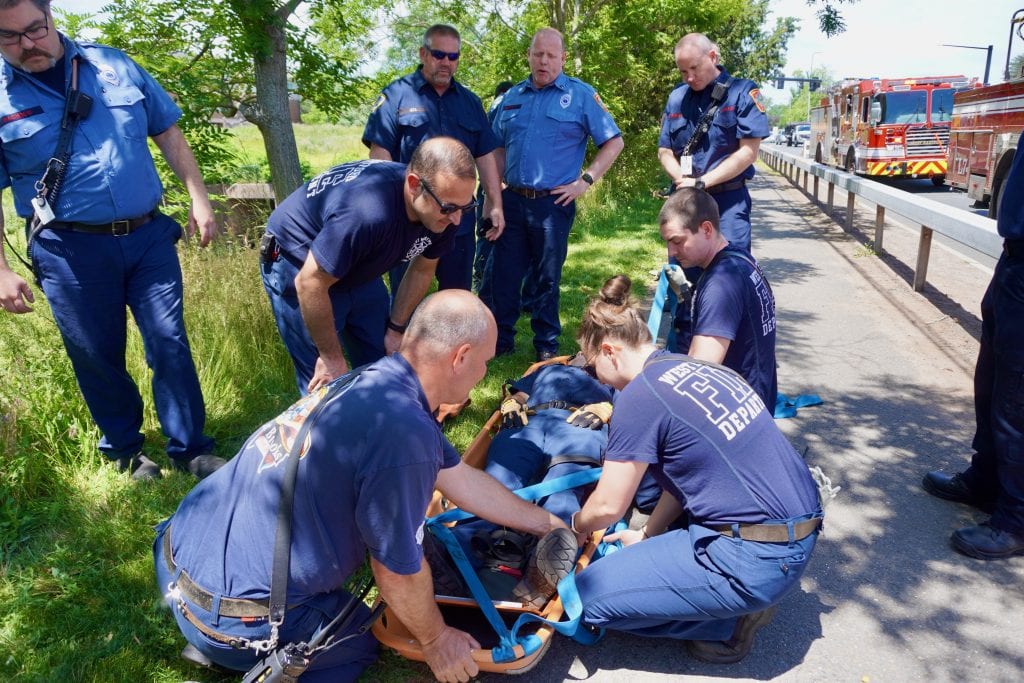
One of the firefighters volunteered to be strapped into the Stokes basket so others could practice securing him with straps as part of a low-angle rescue training exercise. Photo credit: Ronni Newton
By Ronni Newton
Members of the public expressed concern Thursday when they observed what appeared to be firefighters pulling a body out of Trout Brook near Memorial Road, but West Hartford Fire Chief Greg Priest explained that what was taking place was actually a training exercise.
The scenario involved a man, who had perhaps been fishing, and sustained an ankle injury when he tumbled down the embankment along Trout Brook Drive leading to the brook.
The simulation actually involved a roughly 175-pound mannequin dressed in a black jumpsuit that had been thrown into the weeds for the purposes of training in low-angle rescue – which involves an incline of 15-35 degrees – a slope too steep for rescuers to safely carry someone without the use of ropes and other equipment, but not as steep, or requiring as many specialized skills as with high-angle rescue.
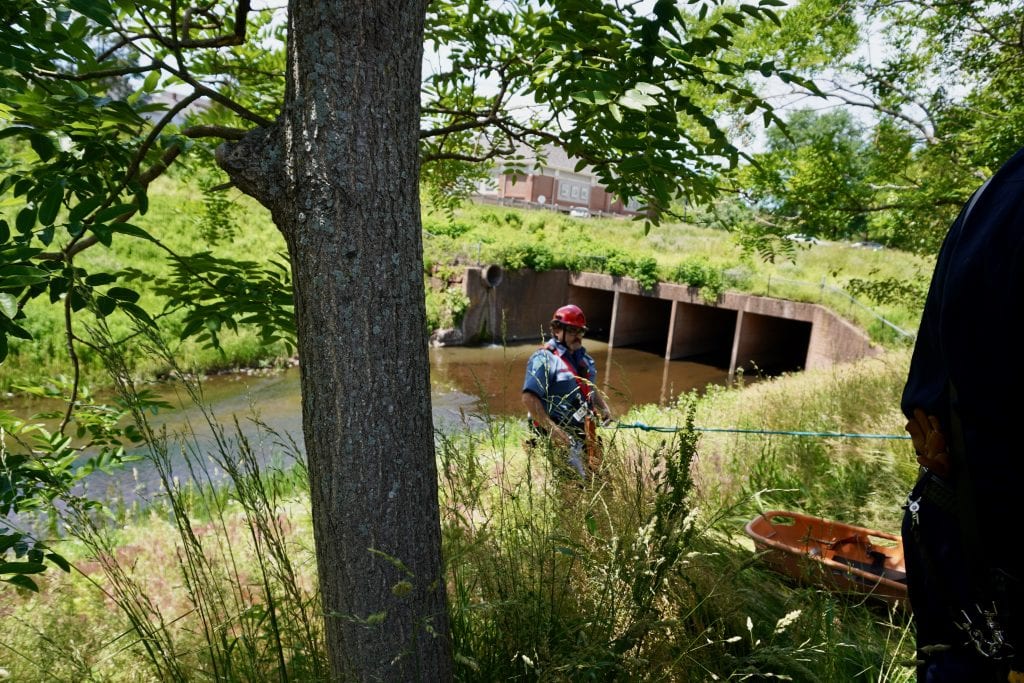
The first West Hartford firefighter heads down the hill wearing a harness during a low-angle rescue training exercise. Photo credit: Ronni Newton
Battalion Chief Keith Albert, onsite Thursday afternoon supervising a second group of firefighters going through the same exercise later in the day, said training of this type takes place on a regular basis, for senior members are well as for new firefighters, and a range were in attendance.
Tony Leca, a senior firefighter who joined the West Hartford Fire Department after a career in Waterbury, has a background in rescue operations, and was leading the exercise.
“We will set up a rope system and a hauling system,” Albert said. The “victim” is stabilized and placed in a Stokes basket.
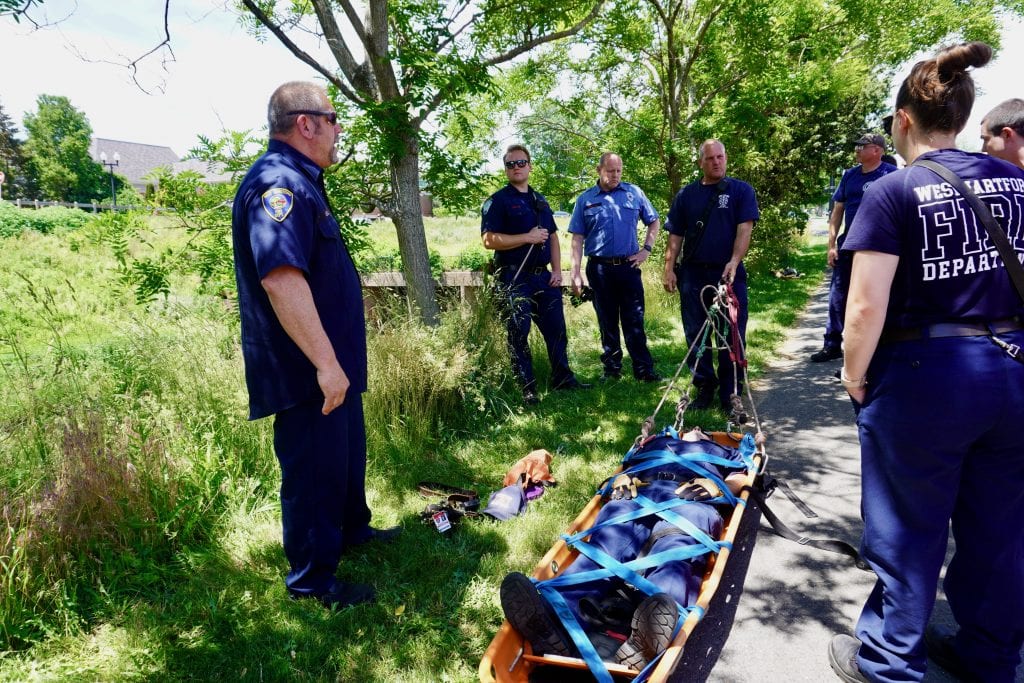
Tony Leca (left), who was leading the West Hartford Fire Department training exercise, speaks to the participants about their job strapping in one of the firefighters who volunteered to be strapped into the Stokes basket. Photo credit: Ronni Newton
The first task practiced by the team was securing the victim in the Stokes basket. One of the firefighters, who was roughly the same size and weight as the mannequin, volunteered to be strapped in so those skills could be tested.
Leca said if the victim was a child or a smaller person, blankets or padding would need to be added to the Stokes basket to ensure the victim would be held securely. All items are part of the required equipment on the department’s engines.
One firefighter, wearing a rope harness, headed down the hill first to provide reconnaissance and reported over the radio the nature of the injury – a “fractured ankle” – and calculated the approximate weight of the victim before two other firefighters, also wearing harnesses, followed.
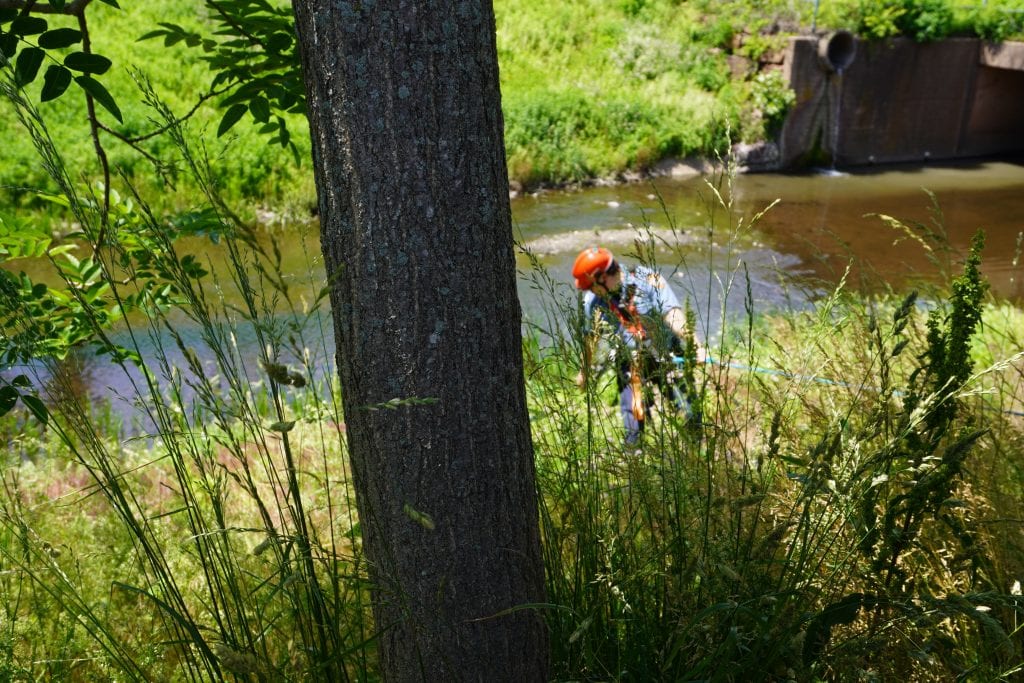
The first West Hartford firefighter heads down the hill wearing a harness during a low-angle rescue training exercise. Photo credit: Ronni Newton
Based on the estimated weight of the victim, a “3:1 mechanical advantage,” also called a “Z-Rig,” pulley system was created and secured to the guardrail along Trout Brook Drive as well as to a nearby tree. In the absence of those objects, the fire trucks would be used.
The reason for using the Z-Rig, Albert said, was to allow the rescuers, who remained harnessed, to walk up the hill carrying the basket, distributing the weight so each would effectively be carrying no more than 5o pounds.
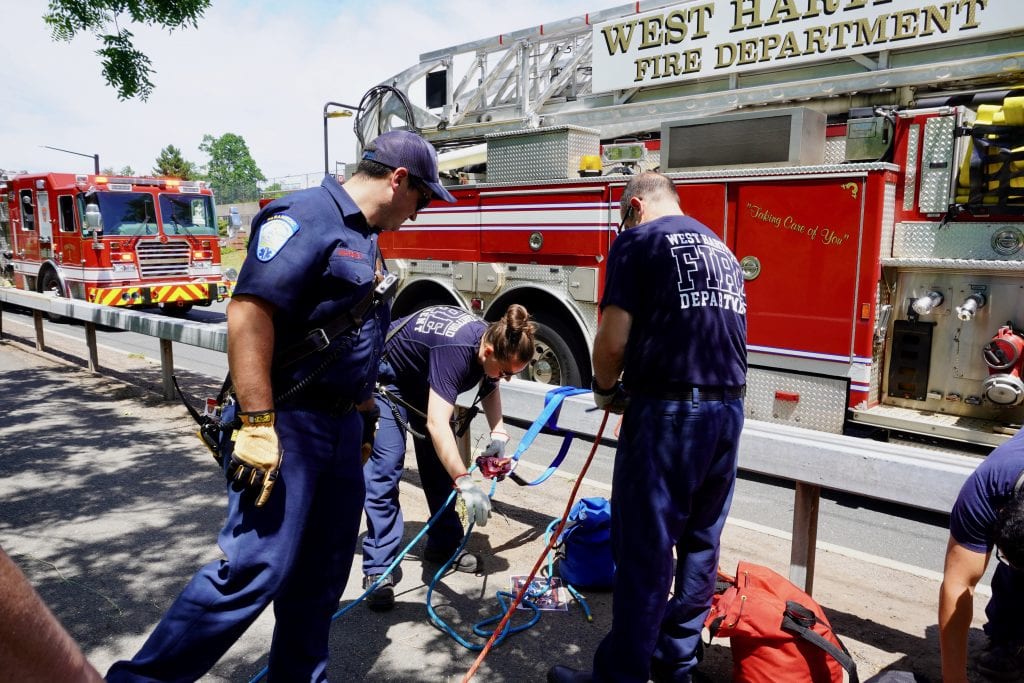
West Hartford firefighters create a Z-Rig pulley system as part of low-angle rescue training. Photo credit: Ronni Newton
A belay – a secondary rope – was also secured to the guard rail, serving as a safety line to catch the rescuers in case the main system failed.
It took just minutes to rescue the victim, but the process would have likely happened faster had it been an actual fall.
“In training it’s not about rushing it,” Albert said. “We want to make sure we get all the pieces right and don’t want errors.”
Following the rescue, the firefighters reviewed each element, critiquing the performance and noting the positives as well as items that may have been overlooked.
“Our goal is at least once a year to work on every type of rescue,” Albert said. In addition to low-angle reduce, that includes falls through the ice, vehicle extrication, high ropes, and falls through a floor.
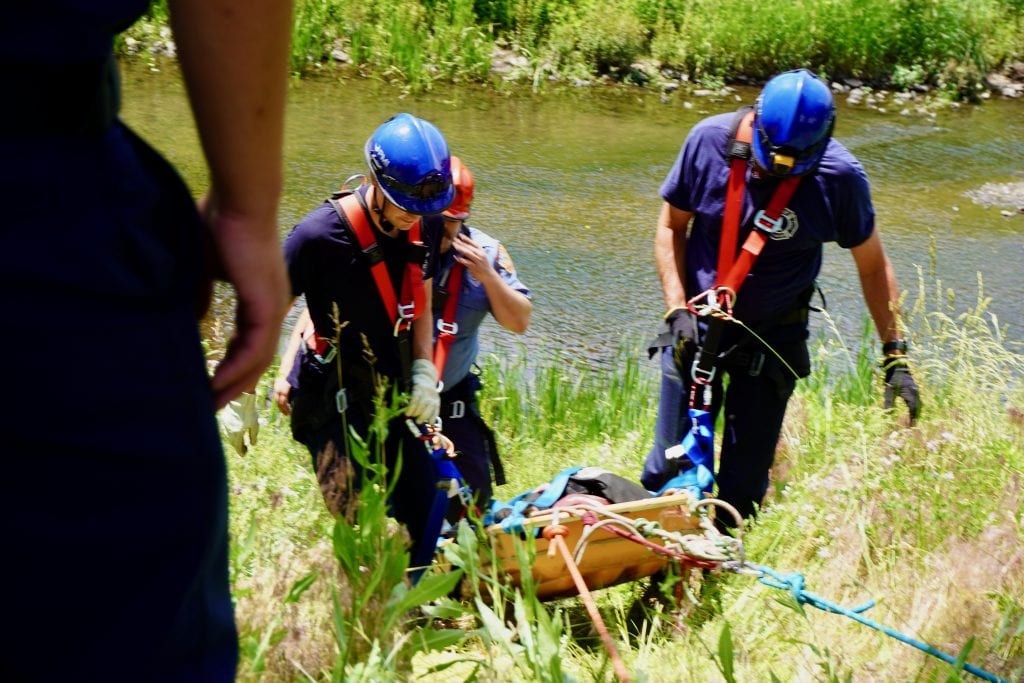
Three West Hartford firefighters rescue a “victim” during a low-angle rescue training exercise. Photo credit: Ronni Newton
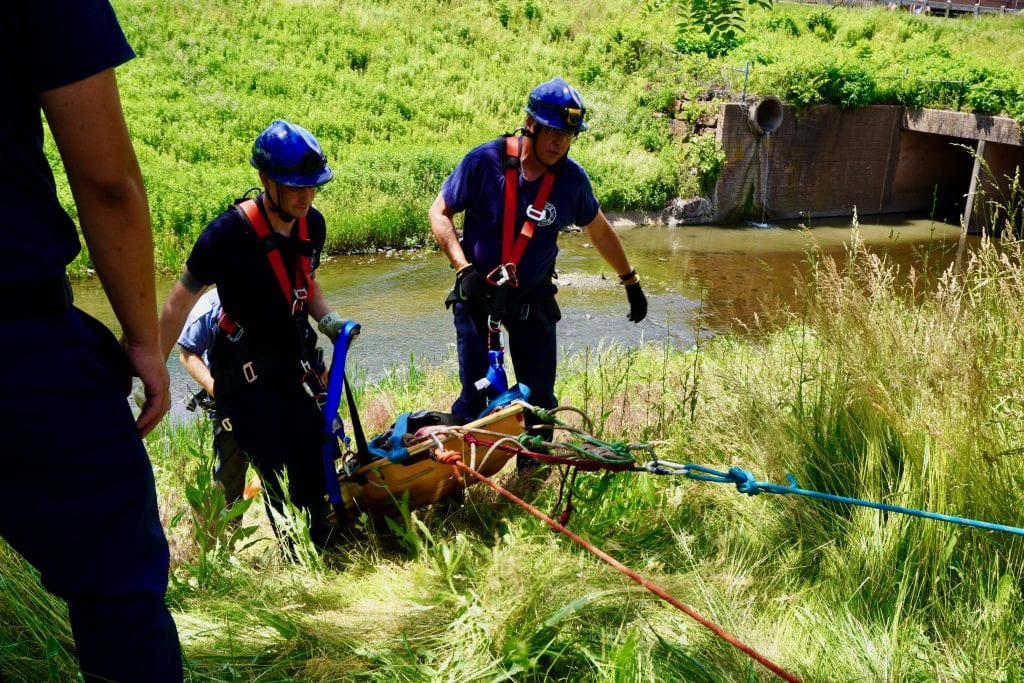
Three West Hartford firefighters rescue a “victim” during a low-angle rescue training exercise. Photo credit: Ronni Newton
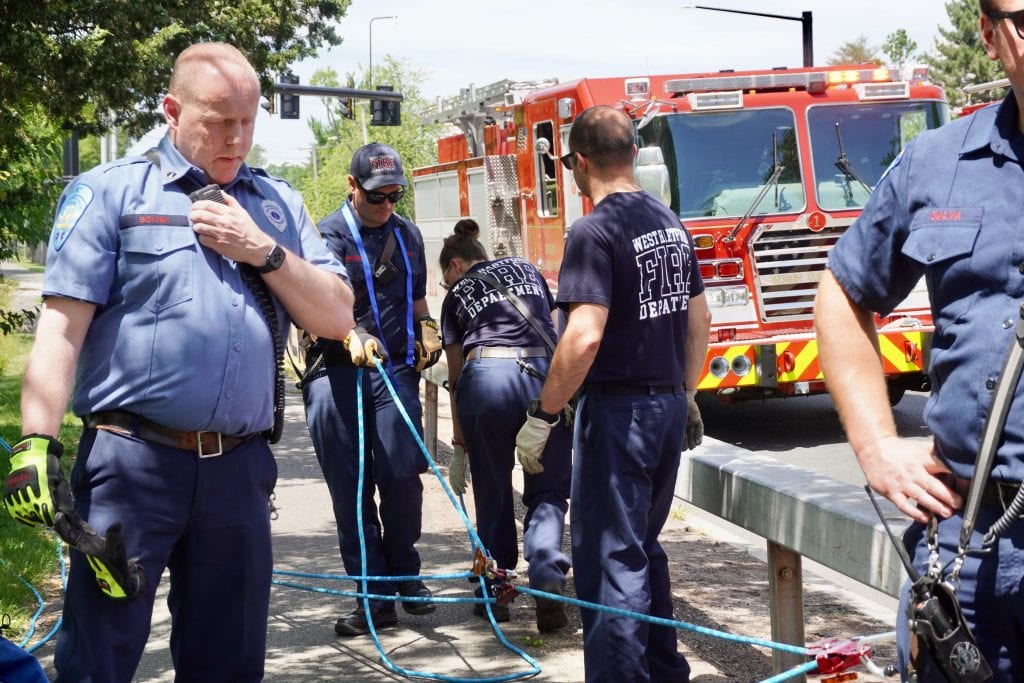
West Hartford firefighters create a Z-Rig pulley system as part of low-angle rescue training. Photo credit: Ronni Newton
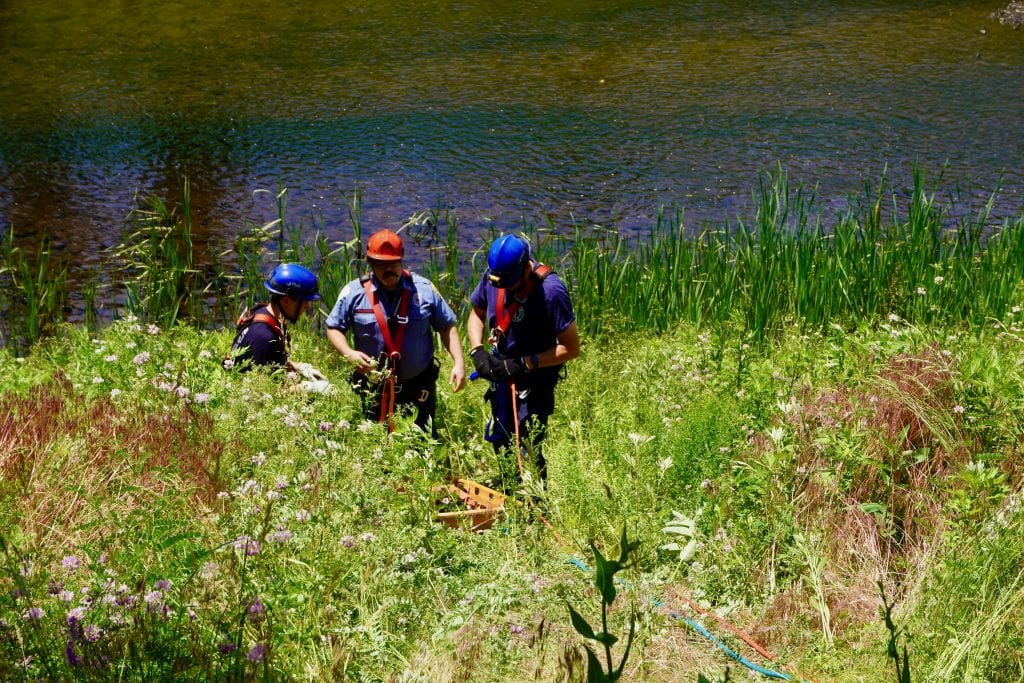
Three West Hartford firefighters rescue a “victim” during a low-angle rescue training exercise. Photo credit: Ronni Newton
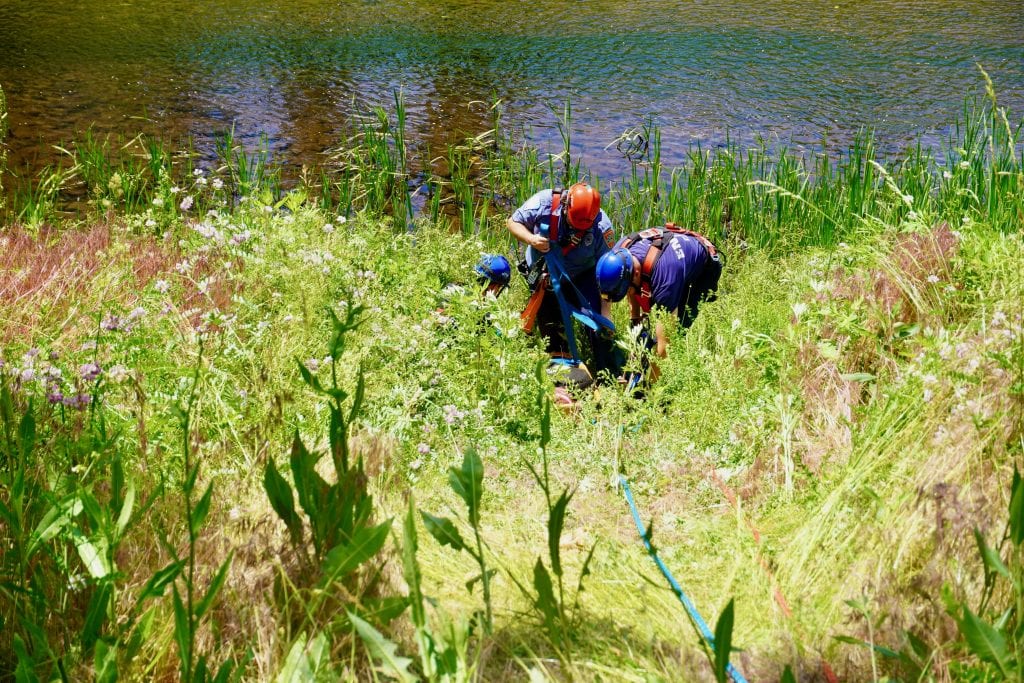
Three West Hartford firefighters rescue a “victim” during a low-angle rescue training exercise. Photo credit: Ronni Newton
Like what you see here? Click here to subscribe to We-Ha’s newsletter so you’ll always be in the know about what’s happening in West Hartford! Click the blue button below to become a supporter of We-Ha.com and our efforts to continue producing quality journalism.



